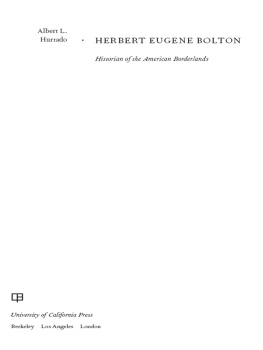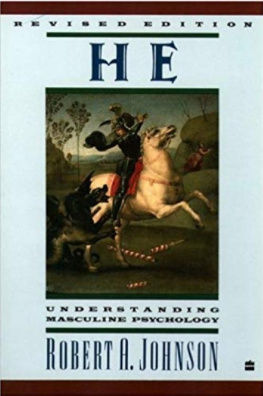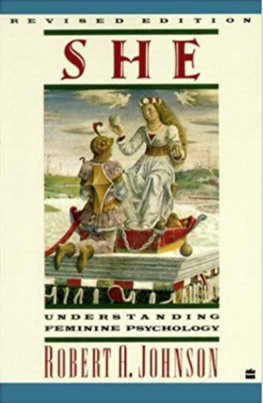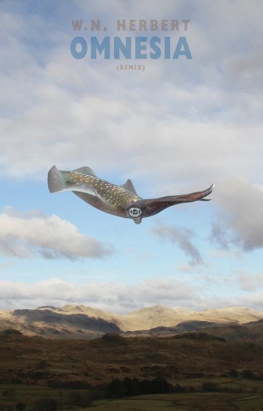Herbert A. Johnson - Wingless Eagle
Here you can read online Herbert A. Johnson - Wingless Eagle full text of the book (entire story) in english for free. Download pdf and epub, get meaning, cover and reviews about this ebook. year: 2001, publisher: The University of North Carolina Press, genre: Politics. Description of the work, (preface) as well as reviews are available. Best literature library LitArk.com created for fans of good reading and offers a wide selection of genres:
Romance novel
Science fiction
Adventure
Detective
Science
History
Home and family
Prose
Art
Politics
Computer
Non-fiction
Religion
Business
Children
Humor
Choose a favorite category and find really read worthwhile books. Enjoy immersion in the world of imagination, feel the emotions of the characters or learn something new for yourself, make an fascinating discovery.

- Book:Wingless Eagle
- Author:
- Publisher:The University of North Carolina Press
- Genre:
- Year:2001
- Rating:4 / 5
- Favourites:Add to favourites
- Your mark:
- 80
- 1
- 2
- 3
- 4
- 5
Wingless Eagle: summary, description and annotation
We offer to read an annotation, description, summary or preface (depends on what the author of the book "Wingless Eagle" wrote himself). If you haven't found the necessary information about the book — write in the comments, we will try to find it.
Wingless Eagle — read online for free the complete book (whole text) full work
Below is the text of the book, divided by pages. System saving the place of the last page read, allows you to conveniently read the book "Wingless Eagle" online for free, without having to search again every time where you left off. Put a bookmark, and you can go to the page where you finished reading at any time.
Font size:
Interval:
Bookmark:
Wingless Eagle
2001
The University of North Carolina Press
All rights reserved
Set in New Baskerville and Gill types
by Keystone Typesetting
Maps by William Nelson
Manufactured in the United States of America
The paper in this book meets the guidelines for permanence and durability of the Committee on Production Guidelines for Book Longevity of the Council on Library Resources.
Library of Congress Cataloging-in-Publication Data
Johnson, Herbert Alan.
Wingless eagle: U.S. Army aviation through World
War I / Herbert A. Johnson.
p. cm.
Includes bibliographical references and index.
ISBN 0-8078-2627-8 (cloth: alk. paper)
1. United States. Army Aviation History 20th century. 2. Aeronautics, MilitaryUnited States History20th century. 3. World War, 1914 1918Aerial operations, American. I. Title.
UG633 .J47 2001
358.40097309041dc21 2001027328
05 04 03 02 01 5 4 3 2 1
In memory of HARRY O. JOHNSON (18951966)
Sergeant, Quartermaster Corps, United States Army, 1918
CHAPTER 1.
Aeronautics in Embryo: The Aeronaut Constituency
CHAPTER 2.
Army Aviation in the Media Fishbowl
CHAPTER 3.
European Military Aviation and the Hay Committee Hearings
CHAPTER 4.
Tactical Thinking, Army Politics, and Congressional Confusion
CHAPTER 5.
Patents, Production, and Progress
CHAPTER 6.
The Goodier Court-Martial
CHAPTER 7.
World War I in the Air: August 1914April 1917
CHAPTER 8.
Dark Clouds and a Silver Lining: The Punitive Expedition and the National Defense Act
Epilogue and Prologue:
Army Aviation in World War I
Appendix:
Chronology of Significant Events
Cortlandt F. Bishop, 1909
Lt. Frank P. Lahm and Maj. Henry B. Hersey
Henry A. Wise Wood, 1917
State senator with Lt. Thomas DeW. Milling in a Wright B Flyer
Wright military flyer
Congressman William G. Sharp
Col. Charles B. Winder, 1911/12
Grover C. Loening
College Park Army Flying Field
Pilot Al Welsh and Lt. Leighton W. Hazlehurst
A military aviators certification
Lts. Lewis E. Goodier Jr., Joseph E. Carberry, and Walter R. Taliaferro
Curtiss JN-3
The wingless war eagle
1. U.S. Army Purchases of Aircraft, 19091918
2. U.S. Navy Procurement of Wright and Curtiss Aircraft, 19111916
3. U.S. Army and U.S. Navy Airship Purchases, 19081919
4. Total U.S. Government Procurement of Airplanes, 19091918
1. Route of the Mexican Punitive Expedition, March 1916February 1917
2. The Western Front after the Ludendorff offensive, March 20, 1918June 4, 1918
3. The St. Mihiel salient and the Meuse-Argonne offensive, September 12, 1918November 11, 1918
4. The Allied drive through the Argonne Forest toward Sedan
This book has aged with me over the past quarter-century, and we have both changed in the process. On October 30, 1972, I received an Air Force Reserve mobilization assignment to the Historical Research Division at the Albert F. Simpson Historical Research Center. To familiarize reservists with the archival resources at the center, it was customary to assign each one to a research topic. Thus, one of my tasks was to conduct research on a monograph that would describe the manner in which public opinion shaped the development of U.S. Army aviation prior to 1950. The overall research plan was established by James N. Eastman Jr., then chief of the Historical Research Division. Dr. Maurer Maurer, then director of the center, provided valuable guidance from his extensive knowledge of the earliest period of military aviation. Much of Dr. Maurers work on the First World War was published in The U.S. Air Service in World War I, 4 vols. (Washington: Government Printing Office, 197879).
My assignment to the Simpson Historical Research Center terminated on August 1, 1980, but I was reassigned as a historical officer on June 30, 1983, to work at the Office of Air Force History, Bolling Air Force Base, Washington, D.C., as a mobilization assignee to the deputy chief of Air Force History. In the course of this assignment, which terminated on April 1, 1984, I was able to continue my research and begin writing an initial draft that covered the years 1907 to 1914. These early efforts provided a basis for a preliminary inquiry into conceptual thought, entitled Seeds of Separation: The General Staff and Military Aviation before World War I, published in Air University Review 39 (Nov.Dec. 1982): 2945. A revised version of this article appears as chapter 4 of this book. Another article covered the early history of the Aero Club of America and its role in early army aviation; this was published in New York History 65 (1985): 37495, and a revised and expanded version appears in this volume as chapter 1. Finally, my initial work on the Wright patent controversy appeared in an article in Air Force Journal of Logistics 9, no. 2 (1985): 26; a much revised and expanded version comprises chapter 5 of this book. I am grateful to the editors of these journals for their editorial assistance and for their kind permission to reprint portions of these articles.
In December 1981 the Army War College Foundation appointed me a visiting research scholar at the U.S. Army Military History Institute, Carlisle Barracks, Pennsylvania. This provided access to useful materials on ArmyAir Service relationships during World War I, and permitted me to examine the memoirs of military aviators who served during the war in Europe.
Subsequent to my retirement from the Air Force Reserve in February 1987, the project has changed in two ways. First, the chronological period has been shortened from its original 1950 termination date, and this has permitted me to concentrate on the years before Armistice Day, 1918. Second, the study has been redesigned to provide more comprehensive coverage of air-power doctrinal development, the adequacy of American industrial and tactical development, and the critical interplay between civilian and military groups. The book has thus moved inexorably in the direction of a monographic study that may begin to explain why the United States Army was so poorly prepared for entry into aerial warfare in World War I.
My appointment as a center research associate at the Simpson Historical Research Center in the summer of 1990 provided me an opportunity to review the air force archives from this new perspective, and to gather information from oral history materials. The University of South Carolinas Committee on Creative Research and Scholarship awarded me a grant in 1989 to complete work at the National Archives and the Library of Congress. Most recently, the University of South Carolina School of Law provided summer research support in 1996, 1997, and 1998. I spent this time studying the court-martial of Lt. Col. Lewis E. Goodier Sr., evaluating general staff and military attach work dealing with military aviation abroad, tracing the evolution and impact of the National Defense Act of 1916, and explaining the Air Services participation in World War I. My understanding of the complexities of the Wright patent litigation was deepened by two successive trips to consult the Wright Brothers Papers at the Library of Congress. The papers of Capt. Washington Irving Chambers, U.S.N., at the Library of Congress are a gold mine of information concerning early aviation. Although they are of tangential value to the main subject of this bookarmy aviationthey and the Capt. Mark Bristol Papers, also at the Library of Congress, provide many helpful insights into the politics and psychological aspects of government aviation from 1911 through 1915.
Font size:
Interval:
Bookmark:
Similar books «Wingless Eagle»
Look at similar books to Wingless Eagle. We have selected literature similar in name and meaning in the hope of providing readers with more options to find new, interesting, not yet read works.
Discussion, reviews of the book Wingless Eagle and just readers' own opinions. Leave your comments, write what you think about the work, its meaning or the main characters. Specify what exactly you liked and what you didn't like, and why you think so.





